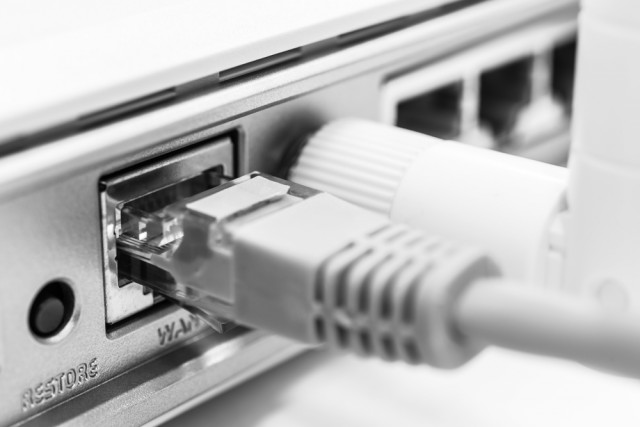The Wi-Fi router's role in today's homes

We’ve come a long way since dial-up internet. Thankfully, we are no longer subjected to its ear-piercing dial tone and instead enjoy the freedom of roaming about in our homes receiving our Internet connection cord-free or going to our local café and surfing with unattached ease. Revolutionizing this advancement is, of course, Wi-Fi.
So much of what we take for granted in our homes -- whether it be bingeing on (Netflix) box-sets, online gaming with an opponent who resides in another country, or even everyday practicalities like ordering dinner or communicating with friends and family -- is dependent on the Wi-Fi router, that little box in the corner with its row of blinking lights.
Having reliable Wi-Fi is as much of a necessity as electricity and running water in today’s household. Yet, as is so often the case with such necessities, the Wi-Fi router is something that is taken for granted. It’s one of those household appliances that you’re most likely to notice only when it’s not working as it should be. This is why I believe the wireless router is really the unsung hero of today’s technology.
The fact that we depend on the Internet for more than we used to is no secret, of course, but the speed at which I’ve witnessed the once-humble Wi-Fi router develop in terms of its capabilities in supporting our increasingly-connected lives isn’t to be understated.
From the first consumer-grade units, launched in 1999, to present day pioneering of 802.11ac Wave 2 MU-MIMO (Multiple User, Multiple Input and Multiple Output) technology, the router has always been challenged with keeping pace with our insatiable appetite for connectivity and content. And with the mass-adoption of the connected home approaching, this challenge is only growing in scale and importance.
The importance of investing in a quality Wi-Fi router is something that many everyday consumers simply don’t understand or don’t want to be bothered with. Some consumers are beginning to learn that the Wi-Fi router supplied by their Internet Service Provider (ISP) is not only outdated (nearly 50 percent of households are still using routers running versions of Wi-Fi that are at least 12 years old), but it’s also not "free" as ISPs are charging monthly rental and handling fees for their hardware.
As available download speeds continue to expand -- the current wireless-N technology reaches up to 450Mbps while wireless-AC technology, welcomed as the new industry standard, increases speeds by 2.8 times which is to up to 1.3Gbps -- the need for faster Wi-Fi continues to grow. That is fuelled by high bandwidth activities like video streams and the need for multiple devices to be connected and competing for limited throughput from older Wi-Fi routers.
The current progressive trends that we see taking place are all available because of the way the wireless router has changed how we gather and share data. Originally only providing home computers with shared access to the Internet, routers now support a multitude of applications running on different devices, including smartphones, personal computers, tablets, peripheral devices such as printers and scanners, home entertainment systems and smart household appliances.
Modernizing the TV, movie and music industry, the advancements in wireless networks have also provided consumers with the opportunity to access their favourite tunes or movies cheaper and faster. The latest 802.11ac Wave 2 MU-MIMO technology helps ensure uninterrupted Wi-Fi connectivity to multiple devices in the home and functions as if each device has its own dedicated router, revolutionizing the home wireless experience.
The average house now has more than five devices connecting to the Internet at the same time and they’re not used for just sending emails and tweets. Having dedicated bandwidth for devices working simultaneously via MU-MIMO enhances the experience so you won’t see a buffering icon when streaming a movie, suffer listening to choppy music or play video games online with a lag.
Increased portability and accessibility, faster speeds and extended range have all contributed to better networking at home and at work -- our business evolution is evidence that the home router has matured, along with the Internet, to become a linchpin of all communications: data, voice and video.
It’s fair to say, as we introduce more smart devices into the home, we’ll look more intently to our home network and how we can achieve a smoother experience for all of our connected devices. By 2020 we can expect to collectively own anywhere from 25 to 33 billion gadgets. More consumers are beginning to understand that the routers supplied from ISPs are not optimized to support even the current amount of content consumption, so imagine when we reach 2020!
The future of home networking is about delivering a seamless experience for every home by increasing speed, extending range, providing robust security options, and maintaining a stable connection even when simultaneously streaming on our smart TVs, gaming on our laptops and downloading apps on our smartphones.
So think about what you have connected to your router today, maybe $3,000 -- $10,000 worth of technology? Wouldn’t you want all that technology connected to a premium router that can handle all your Wi-Fi needs?
As the smart home concept becomes a reality, consumers will come to rely on having a premium home networking router which can truly handle the amount of devices that will depend on it.
Mike Chen is the vice president of product management and engineering at Linksys.
Published under license from ITProPortal.com, a Net Communities Ltd Publication. All rights reserved.
Image Credit: Georgii Shipin / Shutterstock